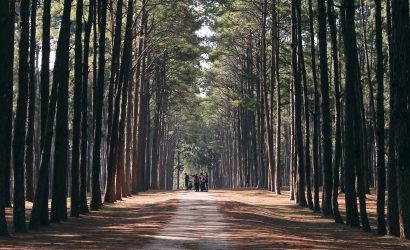While venturing through local wooded areas in late winter, early spring, there’s a lot of brown. Our landscape seems pretty barren, dead, and desolate. When the recent warm-front passed over the Eastern Shore, we were all excited to see little sprouts of green shooting up through the winter’s vegetation leftovers. If you look closely there are greens shining through the bitter backgrounds. These greens are something most of us just over look – moss.
 |
Hypnum
Hypnum is a shade-loving moss that is also known as log or fern moss. It thrives in shaded areas and has a light to moderate green coloring. This is the kind of moss that takes over most area yards. Many shaded homes in Ocean Pines have yards completely comprised of Hypnum moss. It stands up to foot traffic, spreads easily, and grows slowly. This moss is easy to pick up and transplant – just avoid full-sun areas because it will dry out too quickly.
|
 |
Cushion Moss or Leucobryum
Leucobryum mosses tend to be extremely cushiony, spongy, and absorb large amounts of water. Depending up on the area planted, this moss can withstand year-round wet, shaded areas or partial to full sun, dry areas. Cushion mosses can survive long dry spells. Without water for several days, this moss turns fluorescent green and outstretches its limbs to reach for any moisture it can get.
|
 |
Hair Cap Moss or Polytrichum
The long, dense stems of this moss determined its nick-name. Polytrichum moss grows best in moderate temperature zones, just like those on the Eastern Shore. The deep green plants are usually seen sprouting through layers of damp, brown, fallen leaves. These little, feathery caps smoosh when pressure is applied. I think this type of moss looks as though it could pass as a budding evergreen.
|
 |
Rock Cap Moss or Dicranum
Rock cap moss is typically found in clumps on rocks or rocky outcroppings. This moss is only seen on the Eastern Shore around freshwater streams or ponds that have a rocky basin. It needs deep, dark share to grow. Dicranum is dense, spongy, and firm to the touch. It is a medium or dark shade of green.
(The photo to the left is not rock cap moss. It is Hypnum. There was not any Dicranum in the area I was hiking while photographing.)
|
 |
Thallose Liverwort
These liverworts grow as flat green lobes. This moss-like plant tends to cover large patches of ground, rocks, trees, or any other firm substance that is exposed to large amounts of moisture. They thrive in humid locations. A liverwort is differentiated from a moss by the fact that there is a lack of clearly separated stem or leaves. Liverwort is flat. Typically, on the shore, this species attaches itself to tree bark and makes a tree look as though it’s covered in mint green or gray spots.
|
 |
Leafy Liverwort Leafy liverwort is extremely similar to Thallose liverwort except it is more dimensional than the flat Thallose. Leafy liverwort projects from the tree in scales or fingers. The leafy type is said to resemble an actual human liver and that is why scientists named it liverwort in the first place. This form looks as though there are small shelves protruding from a tree trunk. |
|
Have you ever heard those words before? It’s not a myth. Well, most of the time at least. It is believed that the north side of trees will generally have more abundant moss than any other side. This is assumed because the sun shines on the south side of trees thus meaning the north side will always be the dampest and therefore the mossiest. If you’re out and about in a wooded area, I highly recommend that you check out the north side of a tree. You might spot something interesting in a vibrant shade of green. It’s intriguing to compare and contrast these little plant forms. They are all so different. If you’re lucky, you’ll even spot a slimy slug, a big bug, or another crawling creature cutting a trail through the liverworts and light mosses. |
 |








